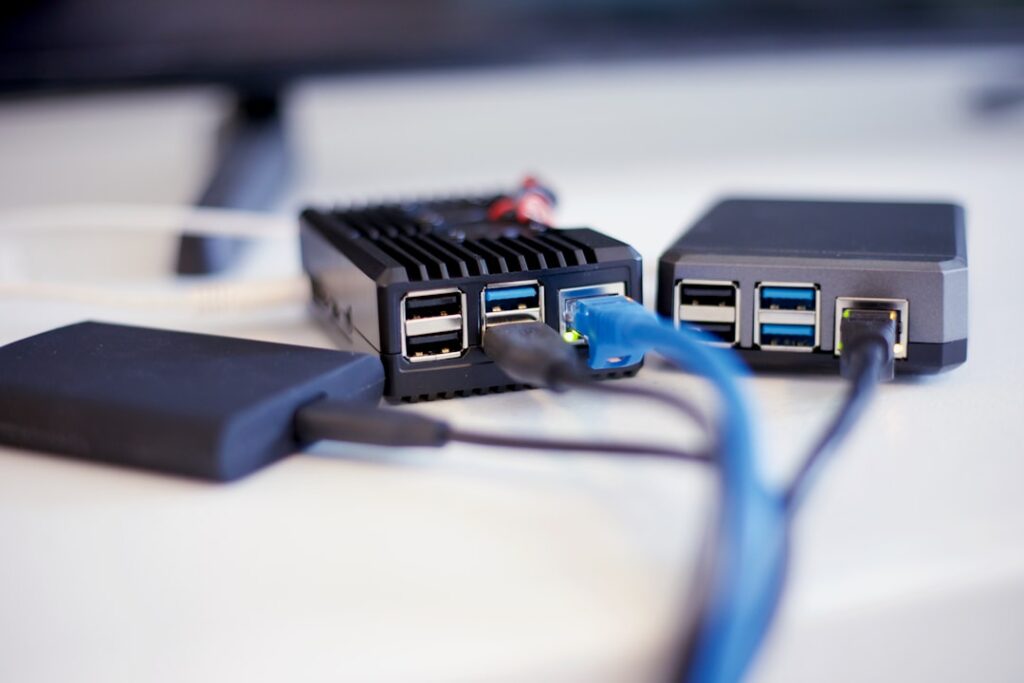Your domain isn’t just a web address—it’s your digital front door, your brand identity, and one of the most valuable (and vulnerable) assets your business owns. From small startups to established enterprises, influencers to nonprofits, domain protection for businesses is no longer a nice-to-have—it’s a necessity.
Unfortunately, scammers know that too. Cybercriminals increasingly exploit unregistered domains, impersonate brands, and prey on those who overlook the technical side of their online presence. Fake trademark notices, phishing emails, and typosquatting attacks are all on the rise.
At Bison Security Co., we help organizations of all sizes prevent brand hijacking, digital impersonation, and costly scams before they happen. In this guide, you’ll learn the most important steps to take for domain protection for businesses—so you can lock down your digital identity before someone else does it for you.

Table of Contents
- 0.1 1. Choosing the Right Domain Name: Your First Step to Strong Domain Protection
- 0.2 2. Domain & Website Protection: Start with the Basics
- 0.3 3. Email & DNS Security: Secure Communication Is Critical
- 0.4 4. Brand Identity & Legal Protections: Essential Steps for Domain Protection for Businesses
- 0.5 5. Technical Tools to Strengthen Your Domain Protection for Businesses
- 0.6 6. Business Continuity: Prepare for the Worst
- 0.7 Bonus: Key Domain-Related Attacks You Need to Know
- 0.8 Final Thoughts: Stand Strong Like a Bison—Protect Your Domain and Brand
- 1 Take Control of Your Digital Safety
1. Choosing the Right Domain Name: Your First Step to Strong Domain Protection
Before you even register your domain, making smart choices about your domain name sets the foundation for effective domain protection for businesses. A well-chosen domain name is memorable, trustworthy, and resilient against common attacks like typosquatting and impersonation.
Best Practices for Choosing Your Domain Name:
- Keep it simple and memorable: Short, easy-to-spell names reduce the risk of user error and typo-based attacks.
- Avoid confusing characters: Steer clear of hyphens, numbers, and uncommon letters that can be easily mistaken or exploited in homograph attacks.
- Align with your brand: Use your exact brand name or a close variation to maintain consistency and build recognition.
- Consider your audience and geography: If you serve local or international markets, think about including country codes or region-specific keywords.
- Think long-term: Choose a domain that will grow with your business and won’t need frequent changes, which can cause confusion or loss of traffic.
- Check availability across platforms: Ensure your desired domain name matches available social media handles to maintain a consistent brand identity online.
Taking the time to select the right domain name reduces your exposure to cyber threats and makes later protection efforts more effective. Smart domain selection is a critical first step in any comprehensive domain protection for businesses strategy. Once you have your domain name locked down, it’s time to move on to securing it—starting with registration and beyond.

2. Domain & Website Protection: Start with the Basics
Strong domain protection for businesses begins with the fundamentals. Your domain name isn’t just a URL—it’s your brand’s online identity, your email backbone, and often the first impression for customers or clients. Losing control of it, or failing to secure its lookalike versions, can lead to brand confusion, phishing attacks, or worse—direct financial loss.
Register Your Domain (and Its Variants Early)
The earlier you register your primary domain (e.g., yourbrand.com), the less likely it is to be hijacked, copied, or abused. But don’t stop at your main URL—effective domain protection for businesses means looking at the full landscape of possible brand impersonation.
Go beyond the obvious:
- Common typos and misspellings (e.g.,
yourbrnd.com,your-brand.com) - Popular TLDs:
.net,.org,.co,.io - Country codes:
.us,.ca,.uk—especially if you operate globally - Keyword variations:
yourbrandsecurity.com,shopyourbrand.com
Free Tool Recommendation: DNSTwister
DNSTwister is a free online tool that performs a fuzzy search of your domain name, generating a list of similar domains (typosquats, homoglyphs, etc.). It also tells you:
- Whether the domain is registered
- Whether it has an MX record (mail server) configured
- And in some cases, the IP address or hosting provider
What to Do with the Results:
- Identify Risks: Domains that are registered and have an MX record may be used for phishing or impersonation.
- Prioritize Defensive Purchases: If a confusingly similar domain is unregistered, consider buying it.
- Monitor or Report Suspicious Domains:
- If a domain appears malicious, set up monitoring or report it to its registrar.
- Use tools like Google Safe Browsing or AbuseIPDB to verify if it’s blacklisted.
- Block Malicious Domains:
- Add known risky or malicious domains to your organization’s edge security (firewalls, DNS filters) and email security tools (spam filters, gateway protection) to prevent phishing and spoofing attacks.
Running this check quarterly or during major brand changes is a simple but powerful way to strengthen domain protection for businesses.

Use Domain Locking
Enable domain lock through your registrar to block unauthorized transfers. This extra setting is a key part of effective domain protection for businesses and helps prevent one of the most common and devastating attacks: domain hijacking.
Set Up WHOIS Privacy Protection
WHOIS privacy hides your personal or business contact details from public records, which reduces phishing attempts, trademark scam emails, domain transfer fraud, and cold spam from shady “SEO experts.” Implementing WHOIS privacy is a key step in your domain protection for businesses strategy, helping safeguard your brand and personal information from cyber threats.
Enable Auto-Renewal and Monitor Expiration Dates
Domains are typically registered for 1–2 years. One accidental lapse could mean losing your brand’s domain to a squatter or opportunist. Enable auto-renewal and set calendar reminders to double-check annually—critical steps in domain protection for businesses.
Keep your payment method and admin email address updated to avoid renewal disruptions and ensure your domain remains securely yours.
Choose a Reputable Registrar
All registrars are not created equal. For domain protection to be effective, use one that prioritizes security. Look for:
- Two-factor authentication (2FA) for login
- DNSSEC support to prevent tampering with DNS records
- Audit logs to track changes made to your domain settings
Top choices include: Namecheap, Cloudflare, Squarespace Domains (formerly Google Domains), or Hover.
Strong domain protection for businesses starts with owning and securing your domain comprehensively. By taking these foundational steps, you build a resilient digital presence that defends your brand against cyber threats and impersonation attempts.

3. Email & DNS Security: Secure Communication Is Critical
Email remains the top entry point for cybercriminals aiming to impersonate your brand or launch phishing attacks. Without strong email and DNS safeguards, your domain becomes a prime target—putting your business reputation and customer trust at risk. Prioritizing email and DNS security is essential for effective domain protection for businesses, ensuring your online presence stays safe and trusted.
Implement DNSSEC to Harden Domain Security
DNS Security Extensions (DNSSEC) add cryptographic validation to your domain’s DNS responses, preventing attackers from redirecting visitors to fake websites or intercepting your traffic through DNS cache poisoning. Enabling DNSSEC is a foundational step in domain protection for businesses seeking to maintain a trustworthy online presence.
Configure SPF, DKIM, and DMARC Records for Email Authentication
These three Domain Name System (DNS) records work together to ensure only authorized servers can send email on behalf of your domain, and to prevent your emails from being spoofed or altered:
- SPF (Sender Policy Framework): Specifies which mail servers are permitted to send emails for your domain.
- DKIM (DomainKeys Identified Mail): Adds a cryptographic signature to your emails, ensuring message integrity.
- DMARC (Domain-based Message Authentication, Reporting & Conformance): Instructs email receivers how to handle unauthorized or suspicious emails and provides feedback reports.
Properly setting these records significantly improves domain protection for businesses and reduces the chances that cybercriminals can use your domain to deceive your customers or employees.
Use a Branded Email Domain to Boost Trust
Avoid using free email providers (like Gmail or Yahoo) for your business communications. Sending emails from [email protected] not only strengthens your brand’s professionalism but also builds customer trust, supporting your overall domain protection for businesses strategy.
Monitor DNS Activity Proactively
Sudden or unauthorized changes to your DNS settings could signal domain hijacking attempts or misconfigurations. Use your domain registrar’s dashboard or third-party monitoring services to keep a vigilant eye on DNS changes, ensuring you can respond quickly to any suspicious activity.

4. Brand Identity & Legal Protections: Essential Steps for Domain Protection for Businesses
Owning your domain is only the first step in securing your online brand. To truly safeguard your digital identity and reputation, you must also protect the name and brand behind your domain through comprehensive legal and monitoring measures.
Register Your Trademark for Legal Ownership and Protection
Register your trademark with the USPTO (United States Patent and Trademark Office) or the appropriate authority in your country to establish clear legal rights over your brand name and logo. If you operate internationally, consider protecting your brand globally through the WIPO Madrid Protocol. Trademark registration acts as a powerful deterrent against copycats and unauthorized use, reinforcing your domain protection for businesses strategy.
Beware of Trademark Scams — We’ve Seen This Ourselves
Recently, we observed a surge in fraudulent trademark “renewal” and “registration” emails targeting businesses. These scams often claim your brand is being registered or challenged in China or other countries, pressuring you to pay exorbitant fees for unnecessary services. These phishing attempts prey on fear and confusion, risking your business both financially and reputationally. Recognizing and avoiding these scams is a vital part of protecting your brand’s integrity.
Monitor Your Brand’s Online Presence Relentlessly
Proactive brand monitoring helps catch impersonation and misuse early. Set up Google Alerts, Mention, Brand24, or similar tools to track online mentions of your brand name, logo, and product lines. Regularly scan app stores and marketplaces to spot unauthorized sellers or fake apps that could damage your reputation or mislead customers. Vigilant monitoring is a key pillar of robust domain protection for businesses.
Secure Social Media Handles Before They’re Gone
Your brand’s social media handles are extensions of your domain and trademark. Even if you’re not actively using platforms like TikTok, LinkedIn, or Twitter, registering your brand’s username prevents cybersquatters or impersonators from exploiting your identity. Consistent handles across platforms reduce confusion and bolster your overall brand security.

5. Technical Tools to Strengthen Your Domain Protection for Businesses
To build a robust defense around your online brand, leveraging the right technical tools is essential. These solutions provide real-time monitoring and proactive blocking that keep cybercriminals at bay.
Use Domain Monitoring Services to Stay Ahead
Tools like DomainTools, Namecheap Domain Watch, and MarkMonitor are vital for domain protection for businesses. They alert you instantly when similar or suspicious domains are registered that could impersonate your brand or redirect your traffic. Early detection allows you to respond before attackers gain ground.
Implement SSL/TLS Certificates (HTTPS) for Trust and Security
Secure your website with SSL/TLS encryption to protect sensitive user data and build customer trust. HTTPS is now a baseline expectation from search engines and visitors alike, improving your SEO rankings and reducing bounce rates. Proper certificate management is a key part of comprehensive domain protection for businesses.
Deploy a Web Application Firewall (WAF)
A WAF defends your site against bots, injection attacks, scraping, and spam. By filtering malicious traffic before it reaches your web applications, a WAF helps prevent costly breaches and downtime, reinforcing your overall online security posture.
Monitor for Homograph and Typosquatting Attacks
Attackers exploit visual similarities in domains—like substituting the Latin letter “a” with a Cyrillic “а” to create lookalike URLs such as yourbrаnd.com. Automated scripts and premium monitoring services can identify these deceptive domains early, enabling swift action to protect your brand and customers.
Block Phishing and Malicious Domains at the Network Level
Tools such as Bison SafeFilter empower businesses to block access to known phishing or impersonator domains across their networks. This layer of protection prevents users from falling victim to scams using domains similar to your own, an essential tactic in domain protection for businesses.

6. Business Continuity: Prepare for the Worst
Even with the strongest defenses, no domain is 100% immune from hijacking or brand impersonation. Effective domain protection for businesses means having a clear, tested incident response plan ready to minimize damage and restore trust fast.
Build a Comprehensive Digital Incident Response Plan
If your domain is hijacked or someone uses a lookalike site to impersonate your brand, act immediately:
1. Lock Down All Critical Accounts:
- Change passwords on your domain registrar, DNS provider, email accounts, and content management system (CMS).
- Enable or reinforce Two-Factor Authentication (2FA) everywhere if not already active.
2. Alert Your Community Transparently:
- Send email notices and post on social media clearly outlining:
- What happened (in simple terms)
- What customers and partners should avoid (e.g., fake URLs, phishing emails, fake job postings)
- What actions you’re taking to resolve the issue
3. Document Every Detail Thoroughly:
- Capture screenshots, record timestamps, and save all communications with registrars, hosting providers, or law enforcement.
- This documentation is crucial for legal action, registrar complaints, and ICANN dispute resolution.
4. Take Legal Action and File Takedown Requests:
- Submit DMCA takedown notices or abuse reports to web hosts and registrars hosting the fraudulent domains.
- If necessary, initiate a Uniform Domain-Name Dispute-Resolution Policy (UDRP) claim via ICANN to recover your domain.
Moving to a New Domain: When the Worst Happens
If you lose control of your primary domain and can’t recover it quickly, prepare to migrate your online presence:
- Register a new domain promptly—consider a close variant to avoid confusion.
- Update all branded email addresses, social media profiles, and marketing collateral.
- Set up redirects and notify customers immediately to maintain trust and traffic.
- Implement aggressive monitoring on both old and new domains for fraudulent activity.
Train Your Team and Centralize Domain Management
Domain protection for businesses extends beyond technology—it requires informed people and solid processes:
- Educate your staff and contractors on phishing, spoofing, and impersonation tactics.
- Establish a simple reporting protocol for suspicious emails, domains, or social accounts.
- Maintain centralized records of all registered domains, renewal dates, DNS configurations, and login credentials securely in a password manager.
Enable Robust Backups for Rapid Recovery
Regularly back up your website files, DNS settings, and email configurations to strengthen your domain protection for businesses. This ensures that in the event of a cyberattack, you can quickly restore operations and minimize disruption.

Bonus: Key Domain-Related Attacks You Need to Know
Understanding the types of cyberattacks targeting your domain and brand is critical for effective domain protection for businesses. Here are the most common threats you should watch for:
Domain Hijacking: Unauthorized transfer or control of your domain by attackers, often through social engineering or exploiting weak registrar security. Hijacking can cause complete loss of your online presence and damage to your brand reputation.
Typosquatting (URL Hijacking): Cybercriminals register domain names that are misspelled or closely resemble your domain (e.g., yourbrnd.com instead of yourbrand.com). These sites can be used for phishing, malware distribution, or diverting your traffic.
Homograph Attacks: Attackers register domains using visually similar characters from other alphabets (like Cyrillic “а” instead of Latin “a”) to trick users into visiting fraudulent websites impersonating your brand.
Trademark Scams: Fake legal notices or solicitations claiming you need to pay for trademark registration or renewal—often from overseas entities. These scams prey on businesses unaware of legitimate trademark processes.
Phishing and Email Spoofing: Using your domain or lookalike domains, attackers send emails pretending to be you to steal credentials, money, or sensitive data. SPF, DKIM, and DMARC help protect against these.
DNS Spoofing and Cache Poisoning: Manipulating DNS records so users are redirected to fraudulent sites without their knowledge, undermining trust in your domain.
Domain Expiration and Dropcatching: Failing to renew your domain on time can result in it being registered by someone else (dropcatching), potentially leading to brand loss or abuse.
Knowing these threats and how to counter them with domain protection for businesses is your best defense. Stay vigilant, monitor regularly, and act fast to protect your digital identity.

Final Thoughts: Stand Strong Like a Bison—Protect Your Domain and Brand
Your domain is your digital territory—your storefront, business card, and the foundation of your online identity. Like a mighty bison guarding its herd, you must protect your domain with unwavering strength and vigilance. Without solid domain protection for businesses, your brand is vulnerable to squatters, scammers, and impersonators ready to trample your hard-earned reputation.
Own your name. Secure your digital land. Defend your brand like the bison defends its herd—steadfast and unyielding.
At Bison Security Co., we stand with you as your trusted guardian in the digital wilderness, providing unmatched domain protection for businesses.

Take Control of Your Digital Safety
At Bison Security Co., we believe strong cybersecurity starts at home—and grows with you. Whether you’re a parent, professional, or small business owner, we’ve got your back with the tools and support you need to stay safe in a connected world.
Here’s How to Get Started:
- Protect Your Home Network — Learn about Bison SafeFilter and block threats before they reach your devices.
- Test Your Scam-Spotting Skills — Take our Family Phishing Quiz and see how ready your household really is.
- Stay Cyber-Smart — Subscribe to our newsletter for weekly safety tips, family-friendly checklists, and early alerts.
- Tune In to the Podcast — Coming soon: honest, practical conversations about digital safety for modern families.
Security That Stands Its Ground.
